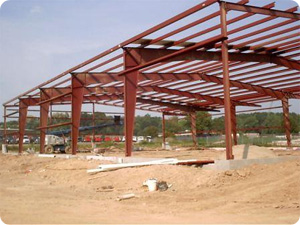Building Foundation

Building the foundation of your house is one of the most important
tasks while building your house. If the foundation is not properly
laid then the entire edifice will be unstable. Here are a few things
that you must remember while laying the house foundation.
- Sometimes it would be better to hire an engineer to inspect and
approve of the concrete foundation that has been laid. Though it may
cost a little more, it is better to spend that money than be sorry
later on. If you have a basement then you definitely need to consult
an engineer.
- Hire a surveyor who will mark the corners of your house. Pay
that extra bit more to save you trouble later on. Ask the surveyor
to inspect the plot before your start the footing work.
- After the surveyor has marked the position of the house, get the
excavator to dig soil for laying the foundation. Consult your
electrician and plumber and you can get the required excavation for
these connections done at the same time.
- The plumber will do the water connections, storm and sanitary
sewer. Once laid inspected by the Water company and City Inspector
respectively.
- The electrician will lay pipes for electrical connections, cable
and telephone. The wires will be connected to the various utilities
as and when required.
- Depending on the quality of the soil excavated you will need
good quality sand, pitrun and drain rock. You may have to get soil
as well, if you have to increase the level of soil or if the soil is
unstable. Before the foundation is laid the soil will have to be
compacted and leveled. Make sure that this is done well with proper
equipment
- Material for the foundation has to be ordered from the
lumberyard and the concrete company. While the foundation is being
laid ensure that no extra building material is delivered, as it will
get in the way of the work being done.
- Contact the electrician, plumber and heating company to ask them
if they want anything installed in the foundation before the
concrete is poured.
- After footing is laid ask the City Hall to conduct a Footing
Inspection.
- Ensure that the footings and foundation are laid at the same
time, so that the concrete can be poured simultaneously for both.
- A day after the concrete is poured the foundation will be
stripped. Place the material that is stripped in such a way that it
stays clean and does not obstruct on going work.
- Waterproofing is necessary for those areas of the foundation
that is below the ground level.
- When there is a basement in the house then, drain tiles will
have to be placed along the edge of the house. Drainage depends on
soil conditions. The top of the drain tile must be placed adjacent
to the footing or foundation joint. If your municipality does not
allow you to connect your pipe to their sewer then you will have to
run the pipe to a gravel pit. Drainpipe inspection will be carried
out by City Hall.
- The plumber will make the water and sewer connections. It will
have to be inspected by City Hall and the water connection will have
to inspect by the Water Company.
- Once the drain tile is inspected backfilling and grading can
begin.
- Slab or Skim Coat is a layer of gravel, poly and finally a layer
of concrete. Hire a professional concrete finisher to do this though
you can do it.
A well-laid foundation is absolutely essential for a house. Hire an
engineer or a general contractor for this purpose. Though it will
cost a little more, but a strong and well-laid foundation is the
best investment you can make. Use good quality material for your
foundation,garage, driveway and sidewalks. Use steel for
strengthening and holding things in place. Cracks formed due to the
use of steel can always be fixed.
| |
Other Categories
House Budget Estimation
Home Exterior
Building Foundation
House Framing Tips
Home Interior
Main Categories
Lifestyle Safety
Planning Bathrooms
Building A House
Home Cleaning
Home Color Scheme
Decorating Homes Ideas
Safety Tips For Do-It-Yourself
Feng Shui Homes To Enjoy
Home Exteriors
Decorating First Homes
Flooring The House
Furnishing Homes
Buying Furniture For Home
Christmas Decoration
Control Home Problems
Designing A New Kitchen
Home Lighting
Painting Wood Panel
Remodeling House
Safety At Home
Seasonal Decoration
Home Storage Solutions
Fabric Window
|

